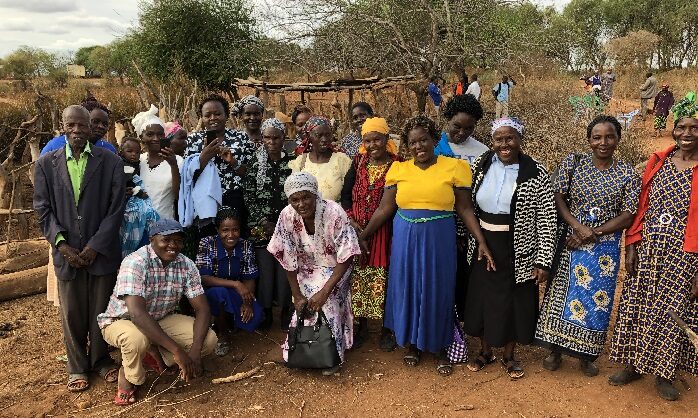ABM Archive Website
THIS WEBSITE CONTAINS ARCHIVE MATERIALS FOR HISTORICAL REFERENCE ONLY
For up-to-date information, including our latest appeals, news, and resources, please visit our current website.
An Oasis in a dry land
December 2018
 |
| Titus stands outside his fodder stalls in rural Kenya. © ABM/Julianne Stewart 2018 |
Mr. Titus Katumo Muinde is a hard-working and industrious man. He lives in rural Kenya with his wife and two pre-school aged children, in the flat, dry plains around Kiangini in the county of Makueni. On land the colour of rust, he ploughs and sows abundant crops of maize, green grams (mung beans), cow peas and sorghum, whilst watching over his sizeable herds of goats and cows and chickens.
It is a joyous scene of prosperity and growth, made all the more remarkable by the fact that this region of East Africa has endured a series of catastrophic droughts since 2011.
These droughts have devastated millions of livelihoods and left thousands on the brink of starvation. In February of 2017, approximately 2.6 million people were at risk in Kenya alone[1], and the United Nations Food and Agriculture Organisation (FAO) warned that successive crop failures had driven up the price of cereals and other staple foods by up to 40%, whilst a lack of fodder and water had increased mortality rates of livestock exponentially. Mario Zappacosta, a senior economist from the FAO emphasized that this combination of factors had “alarming consequences in terms of food insecurity”[2], especially for the thousands of pastoralists in rural regions.
Although droughts are a common occurrence in the sub-Sahara, the severity and frequency of those in recent years are being attributed by many experts to climate change[3]. Larger seasonal patterns such as the El Nino and La Nina cycles are driving extreme weather events across the globe, not only those countries adjacent to the Pacific[4]. Having witnessed this worrying trend first-hand, Anglican Development Services Eastern (ADSE), ABM’s partner in Kenya since 2009, began developing and implementing the Sustainable Livelihoods program with funding from our generous supporters.
In 2016 ABM’s Kenyan partner, Anglican Development Services, Eastern (ADSE) identified the area where Titus lived as being particularly vulnerable in times of drought. They consulted with a number of local “self-help” groups, including the one Titus belonged to, the Kyunyu Water Harvest Group, who agreed to be formed into a registered and trained Community-based Organisation (CBO). They formed a 5 year partnership with ADSE aimed at improving the livelihoods of thousands of people in the area. Titus was so excited when he heard of the opportunities for agricultural training that ADSE offered, and determined from the outset to apply all the new techniques without delay.
 |
| The Kyunyu Water Harvest Group, with Titus at bottom left in the blue cap. © ABM/Julianne Stewart 2018 |
The ADSE team began by teaching the group to terrace their farms in such a way that, even with a small amount of water, plants would receive maximum benefit, and there would be no waste. They introduced a variety of drought-resistant crops that were new to the farmers, and consumed a lot less water than their traditional maize species. The group was also taught how to harvest and store grass and left-over maize as fodder for their animals, allowing the herds to flourish throughout the year with a secure food supply.
After a lot of hard work and dedication, the results for Titus and his family so far have been truly extraordinary. Stay tuned for these in the coming weeks, as world leaders gather at COP 24 Katowice to discuss Climate policy and practical solutions to arrest and reverse the worrying trends of extreme drought. You will hear, in Titus’ own words, the changes that this training program has had on his land and his life.
This project is partly funded by Australian Aid through its ANCP program, and includes funding from ABM’s generous supporters.
[An Oasis in a dry land – Part 2]
< Back


